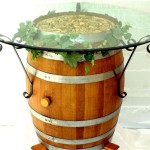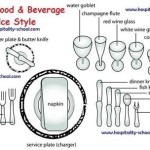Japanese Low Dining Table Names: A Comprehensive Guide
Japanese low dining tables, integral to traditional and modern Japanese home decor, are known by various names that reflect their design, construction, and historical usage. Understanding these names provides insight into the cultural significance and practical considerations associated with these unique pieces of furniture. The terminology often overlaps, and regional variations exist, making it beneficial to explore the common and less common names associated with these tables.
The primary characteristic of these tables is their low height, designed for use while sitting on the floor or on cushions. This design philosophy is deeply rooted in Japanese lifestyle, which traditionally emphasizes closeness to nature and simplicity. The names given to these tables often hint at this relationship and the specific purposes they serve.
Kotatsu: Heated Comfort and Family Gathering
Perhaps the most recognizable Japanese low dining table is the *kotatsu*. A *kotatsu* is a low, wooden table frame covered by a futon, or heavy blanket, with a heat source underneath. Traditionally, this heat source was a charcoal brazier, but modern *kotatsu* predominantly utilize electric heaters. The *kotatsu* is more than just a table; it is a central gathering point for families during the colder months.
The name *kotatsu* is believed to be a combination of *ko* (火), meaning fire, and *tatsu* (燵), an old word for a foot warmer. This etymology clearly indicates the function of the *kotatsu* as a source of warmth as well as a surface for dining, studying, and socializing. The futon draped over the table traps the heat, creating a personal, cozy space for those seated around it.
The use of a *kotatsu* extends beyond simple dining. It serves as a place for reading, writing, watching television, and even napping. Its communal nature encourages interaction and strengthens family bonds, especially during long winter evenings. While the *kotatsu* is primarily functional, its cultural significance is undeniable, representing warmth, comfort, and togetherness.
Variations of the *kotatsu* exist. Some may feature adjustable height legs, allowing for use with chairs as well. Others may have different shapes and sizes to accommodate various room layouts and family sizes. The fundamental principle remains the same: a low table with a heat source and a futon for warmth and comfort.
Chabudai: Versatile and Space-Saving
Another common name for a Japanese low dining table is *chabudai*. The *chabudai* is typically a small, short-legged table used for dining, writing, and other activities. Unlike the *kotatsu*, the *chabudai* does not incorporate a heating element. Its defining feature is its portability and ease of storage.
The term *chabudai* originated in the Meiji era (1868-1912) as Japan began to modernize and incorporate Western influences. The *chabudai* represented a shift away from the traditional, more formal dining arrangements towards a more casual and flexible lifestyle. Families could easily move the *chabudai* to different rooms depending on their needs, reflecting the increasing value placed on efficient use of space.
Typically, *chabudai* tables are made of wood, although other materials such as bamboo or lacquered surfaces may be used. Many *chabudai* tables are designed with folding legs, allowing them to be easily stored away when not in use. This feature is particularly important in smaller Japanese homes where space is at a premium.
The dimensions of a *chabudai* can vary, but they are generally low enough to allow users to sit comfortably on zabuton cushions placed on the floor. The surface area is often sufficient for a small meal or a few books and writing materials. The *chabudai's* simplicity and functionality have made it a staple in Japanese households for generations.
Zataku: A Gathering Place for Conversation and Meals
The term *zataku* is a more general term that encompasses various types of low tables used in Japanese homes. It is derived from the word *za*, meaning "seat" or "sitting place," and *taku*, meaning "table." Therefore, *zataku* essentially refers to any table designed for use while sitting on the floor.
While the *chabudai* is often associated with smaller, portable tables, the *zataku* can refer to larger, more permanent low tables as well. These larger *zataku* might be found in traditional Japanese rooms, serving as a focal point for meals, conversation, and other social activities. The term is less commonly used today, often replaced by more specific names like *chabudai* or *kotatsu* depending on the table's features.
A *zataku* could be a simple, unadorned wooden table or a more elaborate piece with decorative carvings or lacquered finishes. The style and design would typically reflect the overall aesthetic of the room in which it is placed. The height of the *zataku* is crucial for comfortable seating on the floor, ensuring that users can easily reach the tabletop without straining.
In contemporary Japanese homes, the *zataku* may be integrated into modern living spaces, blending traditional design principles with contemporary materials and aesthetics. While the name *zataku* itself may not be as widely used, the concept of a low table designed for floor seating remains a significant aspect of Japanese interior design.
Beyond these primary terms, other descriptive names may be used based on the table's specific features or purpose. For example, a low table used specifically for serving tea may be called a *cha-zen*, while a small, portable writing table could be referred to as a *fude-taku*. The term used often depends on the context and the specific region of Japan.
The choice of material also influences the naming and perception of these tables. Tables made from natural wood, such as cedar or cypress, might be referred to by the wood's name, highlighting the connection to nature. Lacquered tables, on the other hand, might be described by the type of lacquer used, indicating their craftsmanship and aesthetic value.
Ultimately, understanding the different names associated with Japanese low dining tables provides insight into the cultural values and practical considerations that have shaped their design and use. These tables are not merely pieces of furniture; they represent a way of life that emphasizes simplicity, closeness to nature, and communal living.
The enduring popularity of Japanese low dining tables, both in Japan and internationally, speaks to their timeless appeal and their ability to create a comfortable and inviting atmosphere. Whether it's a *kotatsu* providing warmth in the winter or a *chabudai* offering a versatile surface for daily activities, these tables continue to play a significant role in shaping the way people live and interact in their homes.
Analyzing the historical evolution of these tables and their associated names reveals a dynamic interplay between tradition and modernity. While the fundamental principles of low design and floor seating remain constant, the materials, styles, and functionalities have evolved to meet the changing needs and preferences of contemporary society. This adaptability ensures that Japanese low dining tables will continue to be relevant and appreciated for generations to come.

Gurunavi Japan Restaurant Guide Let S Experience

Modern Designs Revolving Around Japanese Dining Tables

Gurunavi Japan Restaurant Guide Let S Experience

Chabudai Wikipedia

I Try Japan The Lowrider Of Tables Japanese Low Table Part 1 Making A Plan

Modern Designs Revolving Around Japanese Dining Tables

Seating Arrangements For The Perfect Dining Etiquette In Japan Kokoro Care Packages

Modern Designs Revolving Around Japanese Dining Tables

Gurunavi Japan Restaurant Guide Let S Experience

10 Unique Japanese Eating Etiquette Rules Nomiya Restaurant Edmonton Ab Ramen Tapas Sushi








